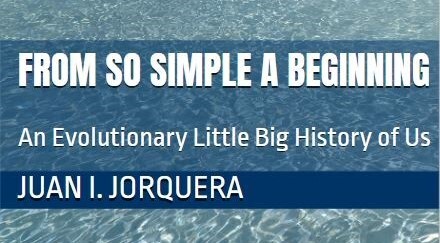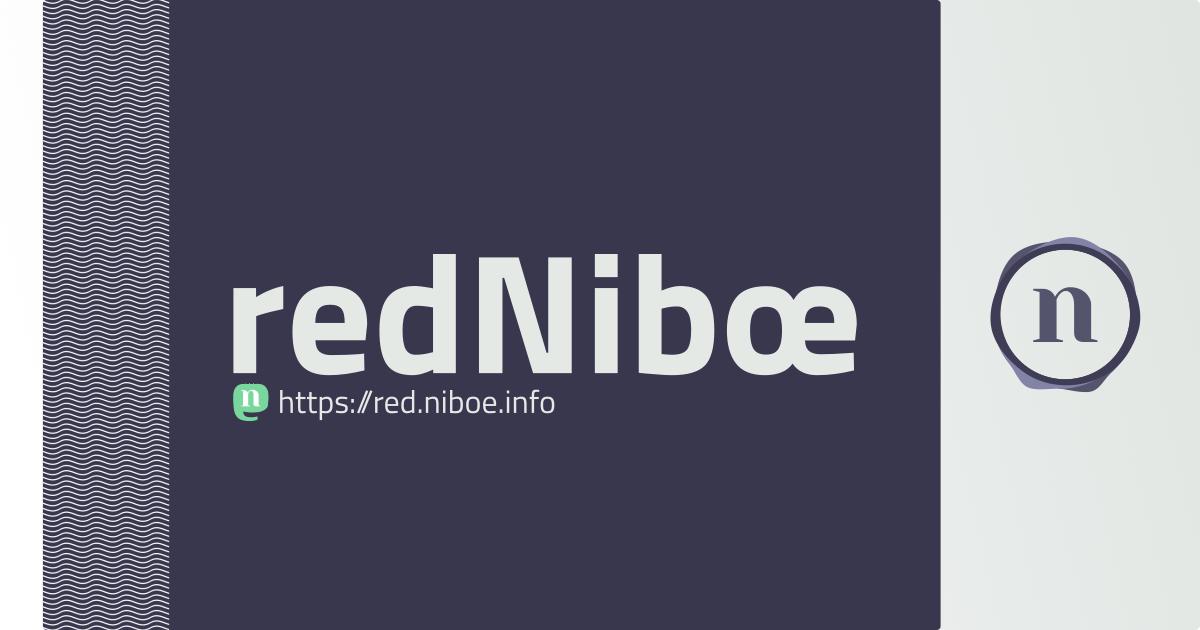
Yo le solicito a usted, y al mundo entero, que me muestre una característica genérica... por la cual distinguir entre el Hombre y el Simio. Yo mismo seguramente no conozco ninguna. Ojalá alguien me la indicara. Pero, si hubiera llamado al hombre un simio, o viceversa, habría caído bajo la prohibición de todos los eclesiásticos. Puede ser que como naturalista debería haberlo hecho.
—Carl von Linné, fundador de la Taxonomía
https://jijorquera.wixsite.com/onscienceandsociety/post/sapiens-a-planetary-odyssey-sapiens-una-odisea-planetaria
Este post comienza la segunda parte de los temas de mi web, abordando la 2ª pregunta (¿qué somos?) en la pintura polinésica de Paul Gauguin: https://upload.wikimedia.org/wikipedia/commons/e/e5/Paul_Gauguin_-_D%27ou_venons-nous.jpg.
A last post (for some time...) on the other humans. The image corresponds to a facial reconstruction of Homo floresiensis, extinct less than 100,000 years ago.
https://jijorquera.wixsite.com/onscienceandsociety/post/hominins-and-homo-6-homininos-y-homo-6
Hola mastodons, paso un nuevo post sobre los homininos, ya en el género Homo, habla de neandertales y denisovanos. Espero que os guste y, si es así, que lo compartáis. Conocer un poco más de nuestros parientes más cercanos extinguidos nos puede ayudar a entender mejor nuestro sitio en el mundo.
https://jijorquera.wixsite.com/onscienceandsociety/post/hominins-and-homo-5-homininos-y-homo-5
#OnScienceAndSociety
Albert Szent-Györgyi, Nobel Price in Physiology:
Life was born in water and is carrying on in water. Water is life’s mater and matrix, mother and medium. There is no life without water. Life could leave the ocean when it learned to grow a skin, a bag in which to take the water with it. We are still living in water, having the water now inside.
Biology and pathology of water. Perspectives in Biology and Medicine 14 (2): 239, 1971.
https://jijorquera.wixsite.com/onscienceandsociety/post/water
Albert Szent-Györgyi, Premio Nobel de Fisiología, 1937:
La vida nació en el agua y continúa en el agua. El agua es la materia y la matriz de la vida, la madre y el medio. No hay vida sin agua. La vida pudo salir del océano cuando aprendió a desarrollar una piel, una bolsa en la que llevar el agua con ella. Todavía vivimos en el agua, teniendo el agua ahora dentro.
Biology and pathology of water. Perspectives in Biology and Medicine 14 (2): 239, 1971.
https://jijorquera.wixsite.com/onscienceandsociety/post/water
Una nueva publicación sobre la aparición evolutiva y la relevancia de los mitos compartidos para la cohesión de las sociedades humanas / A new post on the evolutionary emergence and relevance of shared myths for the cohesion of human societies.
https://jijorquera.wixsite.com/onscienceandsociety/post/societies-and-myths
#OnScienceAndSociety
¡Hola mastodontes! Os paso una breve publicación sobre nuestros primeros ancestros, los homininos, un grupo de primates homínidos bípedos que incluye a Ardipitecos, Australopitecos (entre muchos otros)... y a los otros humanos, ya desaparecidos: https://jijorquera.wixsite.com/onscienceandsociety/post/hominins-and-homo-2-hom%C3%ADninos-y-homo-2
#OnScienceAndSociety
Hello mastodons! I pass you a brief publication about our first ancestors, the hominins, a group of bipedal hominid primates that includes Ardipithecus, Australopithecus (among many others)... and the other humans, now extinct: https://jijorquera.wixsite.com/onscienceandsociety/post/hominins-and-homo-2-hom%C3%ADninos-y-homo-2
#OnScienceAndSociety
The subject of this publication is the evolution of human societies, from the primitive bands of hunters and gatherers to the first tribes, mostly associated to the emergence of farming / Esta publicación trata de la evolución de las sociedades humanas, desde las primitivas bandas de cazadores y recolectores hasta la aparición de las primeras tribus, asociadas en buena medida con la aparición de la agricultura y la ganadería.
https://jijorquera.wixsite.com/onscienceandsociety/post/societies-from-bands-to-states
#OnScienceAndSociety
Hola, esta es otra publicación sobre los otros homininos, los antecesores y parientes extinguidos más próximos de nuestra especie:
https://jijorquera.wixsite.com/onscienceandsociety/post/hom%C3%ADnins-and-homo-3-hom%C3%ADninos-y-homo-3
#OnScienceAndSociety
Hola, paso otro post sobre los homininos, nuestros antepasados más cercanos. Su actual ausencia nos hace percibir una distancia enorme con respecto a los otros animales: https://jijorquera.wixsite.com/onscienceandsociety/post/hominins-and-homo-4-hom%C3%ADninos-y-homo-4
#OnScienceAndSociety
Hi mastodons! Another post on the hominins, our closest ancestors. Their extinction makes us perceive an enormous distance to other animals: https://jijorquera.wixsite.com/onscienceandsociety/post/hominins-and-homo-4-hom%C3%ADninos-y-homo-4
#OnScienceAndSociety
Hello again, mastodons. This is another post on the hominins, now in our genus Homo, dealing with neanderthals and denisovans. I hope you like it and, if so, that you share them. Knowing a little more about our extinct closest relatives can help us understand better our place in the world.
https://jijorquera.wixsite.com/onscienceandsociety/post/hominins-and-homo-5-homininos-y-homo-5
#OnScienceAndSociety
Un último post (por ahora) sobre los otros humanos. La imagen corresponde a una reconstrucción facial de Homo floresiensis, extinguido hace menos de 100.000 años. https://jijorquera.wixsite.com/onscienceandsociety/post/hominins-and-homo-6-homininos-y-homo-6
#OnScienceAndSociety
One more post on the origin and development of societies, focused on the emergence and development of farming /
Una publicación más sobre el origen y desarrollo de las sociedades, centrada en la aparición de la agricultura y ganadería
https://jijorquera.wixsite.com/onscienceandsociety/post/societies-and-farming
#OnScienceAndSociety
I demand of you, and of the whole world, that you show me a generic character ... by which to distinguish between Man and Ape. I myself most assuredly know of none. I wish somebody would indicate one to me. But, if I had called man an ape, or vice versa, I would have fallen under the ban of all the ecclesiastics. It may be that as a naturalist I ought to have done so.
—Carl von Linné, founder of Taxonomy
This post begins the second part of the subjects of this web, dealing with the second question—what are we?— in Paul Gauguin’s Polynesian painting: https://upload.wikimedia.org/wikipedia/commons/e/e5/Paul_Gauguin_-_D%27ou_venons-nous.jpg.
@jorge. Muchas gracias!
An interesting contribution of the journal Nature on the challenges to biodiversity / Una interesante contribución de la revista Nature sobre los desafíos a la biodiversidad https://www.nature.com/immersive/d41586-022-04182-6/index.html
Una muy reciente revisión sobre la carga vírica de SARS-CoV 2 y su cinética de expulsión. Un poco de luz nueva en un campo que cambia muy rápidamente. / A very recent review on SARS-CoV 2 viral load and shedding kinetics. A little bit of new light in this rapidly changing field.
https://www.nature.com/articles/s41579-022-00822-w
First time I heard about a HIV vaccine was in 1984, in a World Federation of Haemophilia meeting, in Rio de Janeiro. A lecturer said that it would take about 5 years or so... Now, about 40 years later, a bit of hope. /
La primera vez que escuché hablar sobre una vacuna para el VIH fue en 1984, en Río de Janeiro, en un congreso de la Federación MUndial de Hemofilia. Un conferenciante dijo que estaría lista en unos 5 años. Ahora, casi 40 años después, un poco de esperanza. /
https://www.science.org/doi/abs/10.1126/science.add6502
Ph.D in Biochemistry and Molecular Biology. About me: https://jijorquera.wixsite.com/onscienceandsociety
